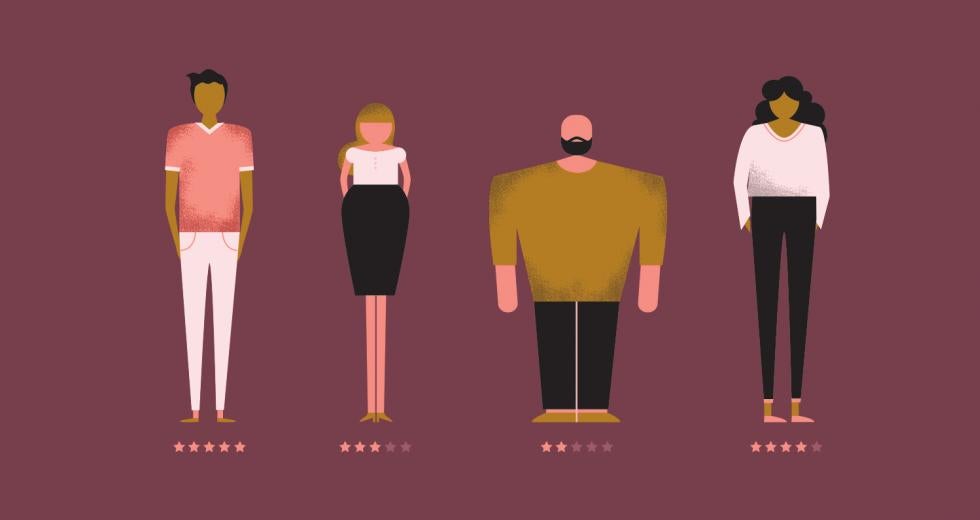In his 2005 book Blink: The Power of Thinking Without Thinking,” Malcolm Gladwell polled Fortune 500 companies and found that 30 percent of CEOs were 6 feet 2 inches or taller. In comparison, only 3.9 percent of the U.S. population are of that height.
Why? Unconscious bias.
Also known as implicit bias, this tendency refers to the mental processes, classifications, stereotyping and decisions that are made in our minds, but outside our mental awareness. These snap judgments lead us to, for example, be more likely to see a tall individual as a leader than a short individual, and are a result of genetically determined processes in which we make quick decisions in order to survive hostile environments. Our brains take shortcuts to judge, classify and act based on limited — and often inaccurate — information.
In an organizational context, when leaders make quick decisions about people, their unconscious bias can impact the way they act, manage, promote and hire. They might be unconsciously judging colleagues and peers based on their skin color, gender, age, height, weight, disability, nationality — or any number of other qualities. That may result in a lack of diversity across all levels of the organization.
There are now many human resource professionals who are making training available to counteract this natural human tendency, with the goal to bring the unconscious conscious. By combating unconscious bias, organizations are more likely to hire and promote a diverse workpool. A 2015 McKinsey analysis found that companies in the top quartile for gender diversity were 15 percent more likely to outperform companies in the bottom quartile for gender diversity. Ethnically diverse companies outperformed non-ethnically diverse companies by 35 percent.
One of the more surreal moments of my career involved sitting in a room with nine white men over the age of 45, discussing their top talent. I was facilitating a talent review conversation to assess which employees were performing at a high level and possessed potential for growth with the leaders of a successful startup organization. The purpose is to identify development opportunities for key talent in order to ensure they are engaged and retained within the organization.
During this particular meeting, I was encouraged to see women and minorities represented on their list of high performers. And yet it wasn’t long before one of the men chimed in, proving that unconscious bias can impact even the most well-intentioned executive teams. Here’s how:
“… and she’s very hard-working, even though she has two little kids at home.” This is what the executive referenced above said, and reflects one of the most commonly heard biases. I will often hear leaders mention whether or not a woman has children, but rarely hear them make the same comments about men. Our society has moved long past the time when men are the exclusive breadwinners and women the homemakers. Yet this bias still often surfaces, implying that women are less available for the work required of them, while men are totally committed — which is rarely the case. What should be under consideration in an employment review, is employment results.
“Unfortunately, this person is an introvert.” I hear this one all of the time. Many leaders have unconscious preference for employees most like themselves. They are unable to recognize the value of different perspectives, different management styles or different ways of problem-solving, which should exist at all levels of the organization. The kind of thinking required for innovation requires being open to a diverse array of approaches. This means examining our biases.
When leaders start discussing their employees under review, they often start with summary adjectives. He or she may be “analytical,” “reliable” or “creative.” But when the employee is part of a demographic minority, unconscious bias can surface and taint the review process. In these cases, the demographic characteristics becomes the first thing described. For example: “This person is an African-American female who is a great problem solver.” Or, “Despite his handicap, he is a top salesman.” The reviewers may go on to describe remarkable qualities and superior results, but the review is already tainted by labeling that may ignite bias in the minds of other reviewers. The playing field is therefore uneven.
I have conducted many training sessions, helping government and corporate human resources professionals recognize how unconscious bias works. Recognition is a valuable first step, but only the first of many steps on the way to action. Here are some things you can do to combat unconscious bias at your organization:
Bring in a third party. Combating unconscious bias is not an inside job. Obviously, what is by definition unconscious cannot be recognized by our conscious brain. To bring the unconscious to the fore we need an outside force. There are many organizations and consultants that offer unconscious bias training.
Take the test. Project Implicit is a nonprofit collaboration of researchers who have developed a free online test you can use to identify your own biases.
Slow down decision making. When faced with human resource decisions, we need to slow down and check our assumptions — our deep assumptions — and ask for outside confirmation on our ultimate judgments. Using diverse panels to make hiring and promotion decisions will help prevent bias from rearing its ugly head.
Label your biases. An important, difficult step is to label our biases when they surface. Bring these damaging pre-conscious judgments into the light and help our colleagues become more aware of just how many there are and how widespread they are.
Talent reviews are valuable and necessary in business, academic and government environments. Getting leaders together to talk about all their top talent is a great way to increase these individuals’ visibility within the organization and for the team to find creative ways to develop them. Unrecognized discrimination is a fact in all our lives. The solution is to see it and label it — in ourselves and others.



